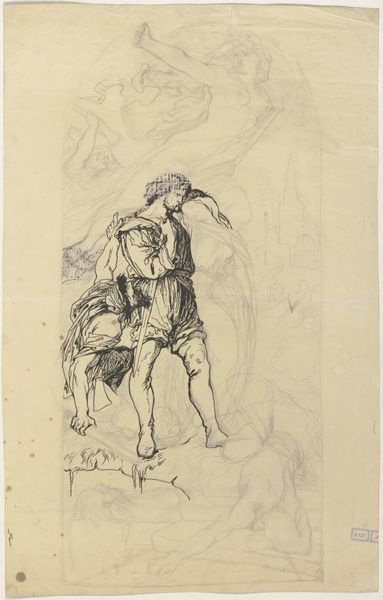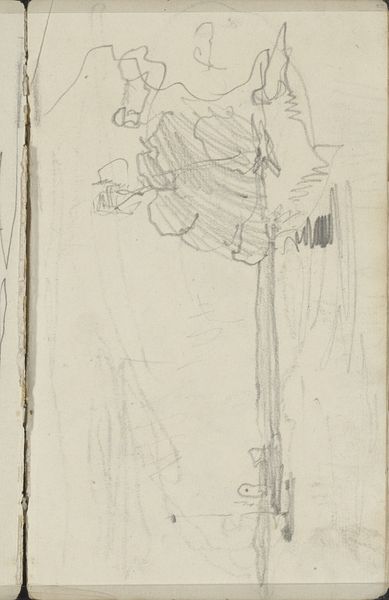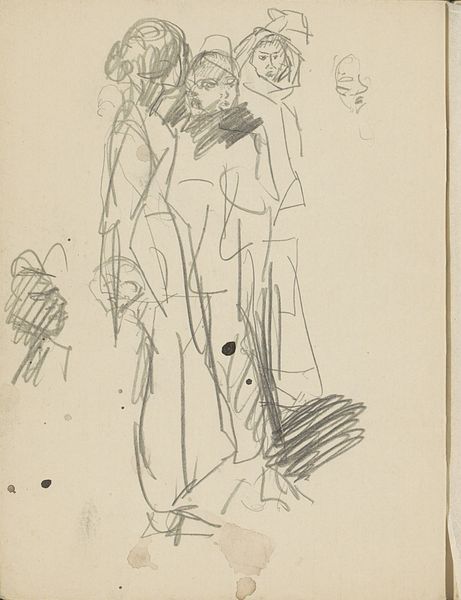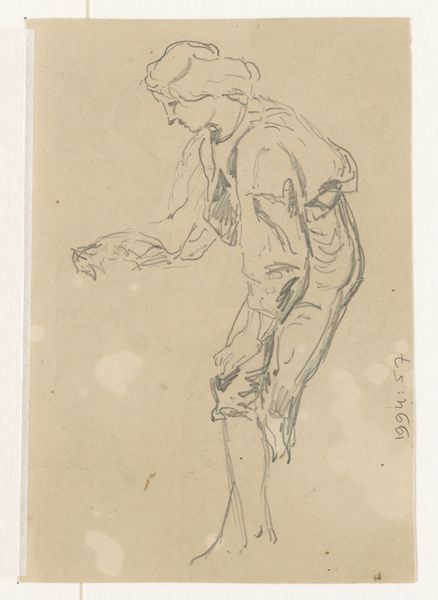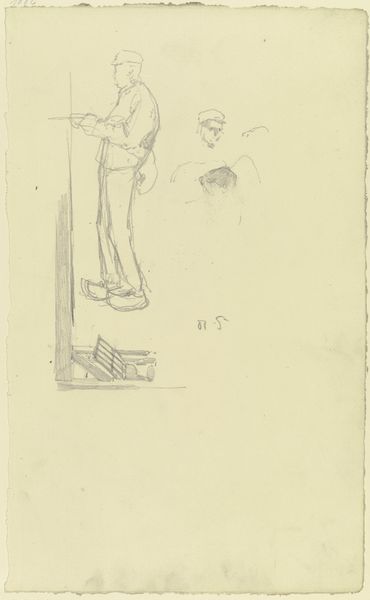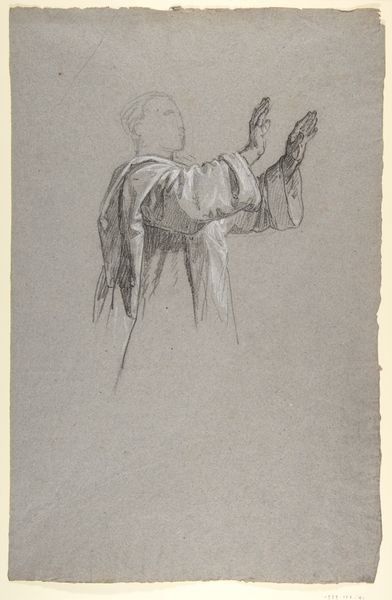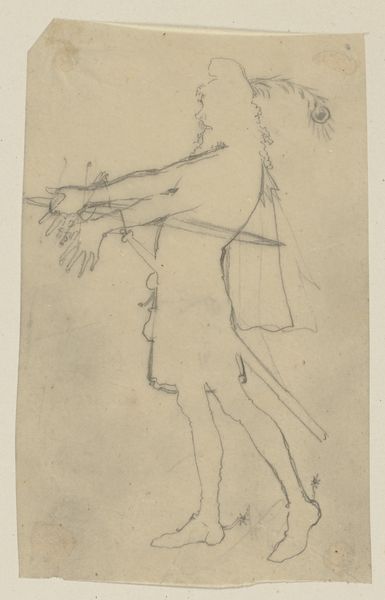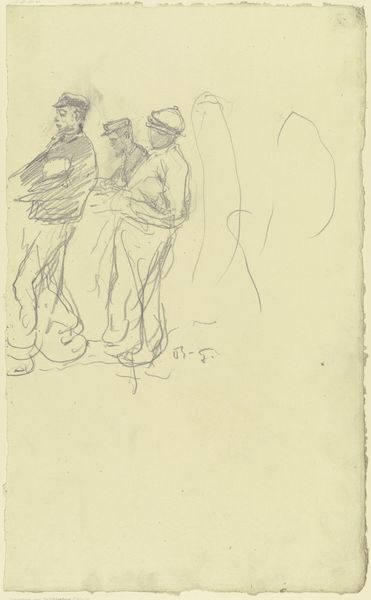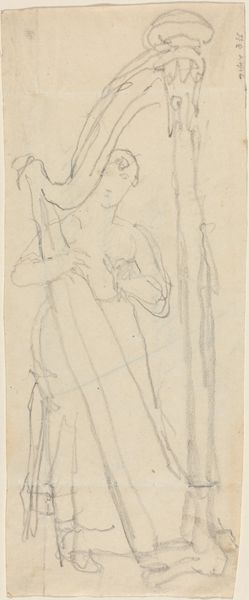
drawing, paper, pencil
#
drawing
#
landscape
#
figuration
#
paper
#
romanticism
#
pencil
#
realism
Copyright: Public Domain
Editor: This pencil drawing, titled "Spazierendes Paar in Ruckenansicht" which translates to "A couple walking, seen from the back" is by Otto Scholderer. It's on paper, and evokes a quiet, contemplative mood. What do you see in this piece? Curator: I see a meditation on gender roles and public space, even in its apparent simplicity. We have a man and a woman, figures coded through dress, moving together, yet their individual experiences of that shared space would have been drastically different in the 19th century. Editor: How so? Curator: Well, consider the woman's attire. It seems to almost consume her, doesn't it? To what extent do you feel it confines her? Her movement and visibility are already constrained in ways the man’s aren’t. And think about who is afforded the position of gazing and contemplating nature? Traditionally, this was a male privilege, framing women more often as objects *to* be seen within that landscape. Editor: So, you are suggesting the drawing highlights these power dynamics, rather than just being a simple scene? Curator: Precisely. The choice to show them from the back, denying us access to their individual expressions, might imply a universalization, but also hints at a systemic blindness towards those deeply ingrained inequalities. Whose gaze truly matters here? Editor: It’s fascinating to think about art not just as aesthetic, but as a commentary on societal structures of power. Thanks. Curator: Absolutely. It's about unpacking those layers, and realizing how art reflects and even reinforces – or challenges – these dynamics.
Comments
No comments
Be the first to comment and join the conversation on the ultimate creative platform.
